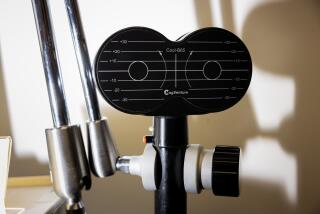Ole Ivar Lovaas dies at 83; UCLA psychology professor pioneered autism treatment
- Share via
Ole Ivar Lovaas, a UCLA psychology professor who pioneered one of the standard treatments for autism, died Monday night at a hospital in Lancaster. He was 83.
He had been recovering from surgery for a broken hip and developed an infection, according to a family member. He had been diagnosed with Alzheimer’s disease a few years ago.
FOR THE RECORD:
Ole Ivar Lovaas obituary: In Friday’s LATExtra section, the obituary of Ole Ivar Lovaas, a UCLA psychology professor who pioneered one of the standard treatments for autism, said that one of his former graduate students went on to open the Center for Autism Research and Treatment. It is the Center for Autism and Related Disorders. —
Lovaas’ 1987 paper, “Behavioral Treatment and Normal Educational and Intellectual Functioning in Young Autistic Children,” showed for the first time that intensive one-to-one therapy early in life could eliminate symptoms of the disorder in some cases.
He described some of his research subjects as having “recovered,” a concept that remains controversial but appealed to parents and helped launch an industry that provides the treatment to the growing numbers of children being diagnosed.
“Before that [paper], people still felt that there was no hope once your child was diagnosed with autism,” said Doreen Granpeesheh, one of his former graduate students who went on to open the Center for Autism Research and Treatment, a large therapy company.
FOR THE RECORD: In Friday’s LATExtra section, the obituary of Ole Ivar Lovaas, a UCLA psychology professor who pioneered one of the standard treatments for autism, said that one of his former graduate students went on to open the Center for Autism Research and Treatment. It is the Center for Autism and Related Disorders.
As a young professor at UCLA, Lovaas found his first research subjects in the 1960s in state mental institutions. Most didn’t speak or know how to use a bathroom. One boy repeatedly punched himself in the head.
Using the principles of Applied Behavioral Analysis, or ABA, which relies on reward and punishment, he helped get some out of state facilities, at least temporarily. It was his first inkling that such children could be helped.
His early work was controversial because it employed electric shocks, delivered with a cattle prod — a technique that he later renounced in favor of milder methods, including the use of food treats, strict orders and access to favorite activities.
Though he was trained in Freudian theory, Lovaas became such a firm believer in behavioral therapy that he once told a reporter for Los Angeles Magazine that he could have turned Adolf Hitler into a nice man had he gotten him to UCLA by age 4 or 5.
Lovaas, who was born in Norway on May 8, 1927, often said that the Nazis had sparked his interest in human behavior. His middle-class family — his father was a journalist — lived in the farm town of Lier, near Oslo, and was forced to work the fields during the Nazi occupation of the 1940s.
Lovaas, a violinist, came to the United States after the war on a music scholarship to Luther College in Decorah, Iowa. He graduated in 1951 and spent the next seven years getting his doctorate in psychology at the University of Washington.
In the meantime, he married Beryl Scoles, another student, with whom he went on to have four children — daughters Kari, Lisa and Randi and son Erik. They later divorced.
Lovaas then married Nina Watthen, whom he met while lecturing in Norway in the 1980s. Lovaas, who over the years lived in Malibu and Topanga, is survived by his wife, all of his children, six grandchildren and three great-grandchildren.
At UCLA, Lovaas’ class, Psychology 170A: Behavior Modification, was among the most popular undergraduate courses. In a booming voice, he entertained students with stories of Norway and played the song “Dust in the Wind” to introduce a lesson on human malleability.
He trained many of those students to deliver his therapy, sending them into the homes of the young children he enrolled in his studies. The highly regimented treatment broke the basic skills of life into thousands of individual drills.
His 1987 paper compiled several years of results. Of 19 children who received 40 hours a week of the treatment, nine were able to go on to mainstream first-grade classrooms and significantly raise their IQ scores. Comparison groups that got fewer hours of therapy, or none at all, fared far worse.
Demand for the therapy was instant and intensified with the 1993 publication of “Let Me Hear Your Voice,” a memoir written under a pseudonym by a mother who had used it to help her two autistic children.
Though it has more scientific support than other treatments, it often is criticized as being too rigid. Most attempts to replicate it have produced improvements in children, but not to the same extent that Lovaas had reported.
He did not take kindly to criticism of his research, spending weeks to craft long rebuttals.
“It became a point of honor for Ivar to respond to anybody who was critical of the 1987 study,” said Tristram Smith, an autism expert at the University of Rochester who was a graduate student of Lovaas. “He was definitely confident that he was right and that most other people had nothing to say. In some ways, you sort of have to agree. Nobody else was doing this kind of research.”
More to Read
Sign up for Essential California
The most important California stories and recommendations in your inbox every morning.
You may occasionally receive promotional content from the Los Angeles Times.











